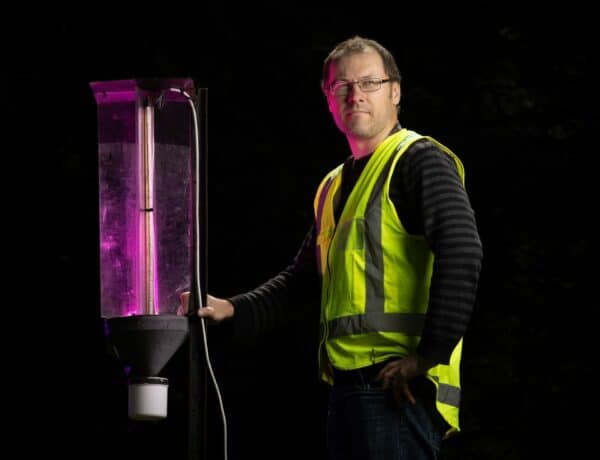Steve Pawson
University of Canterbury
Automation can improve biosecurity surveillance systems
Surveillance is an essential part of protecting New Zealand’s economic assets and natural taonga from damaging exotic organisms.
Our government currently spends over $125 million a year on monitoring for biological threats. It’s an expensive process because it requires thousands of hours of highly skilled human labour.
As part of the BioHeritage National Science Challenge the State-of-the-art Surveillance team is developing prototype technologies that will automate and improve surveillance results, while saving costs.

Our researchers are installing UV light traps at the Port of Tauranga to help detect the arrival of foreign insects.
All of the insects caught will be analyzed in the lab by a process called High-Throughput Sequencing (HTS). This will tell us the DNA of every insect species caught in the trap.
If a new insect species or a known threat comes into Tauranga, we know where and when it was collected, and we can take steps to eradicate it.
Developing DNA diagnostic technologies like this allows us to cost-effectively scale-up our efforts to find new pests early. This early detection is essential for protecting our natural and productive environments.
Dr Manpreet Dhami (Manaaki Whenua – Landcare Research) spoke about our eDNA research at this webinar:
Our research team will use a camera mounted on a moving vehicle to monitor the health of our urban rākau (trees).
The camera will take pictures of street trees every fortnight. Images will be pre-processed to maintain people’s privacy (blurring cars, people, houses etc.) and then analysed by computer to identify what kind of trees each street has, and whether they look damaged by pest or disease.
When we find sick trees we can send a biosecurity inspector to focus just on the damaged trees – saving time and money. It works the other way, too: if our DNA project above discovers a new insect has entered the country, and we know that it’s a threat to a specific kind of tree, we’ll have a map of where those trees are in our cities and can go inspect them.